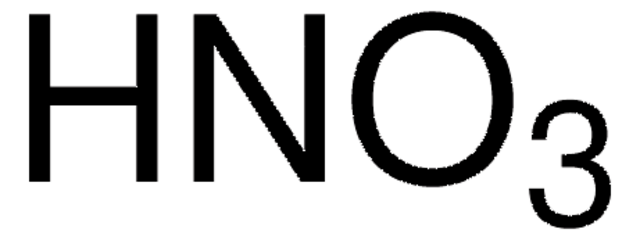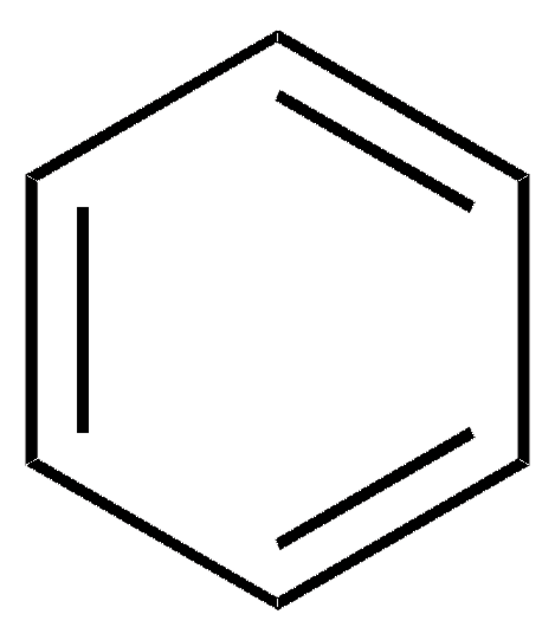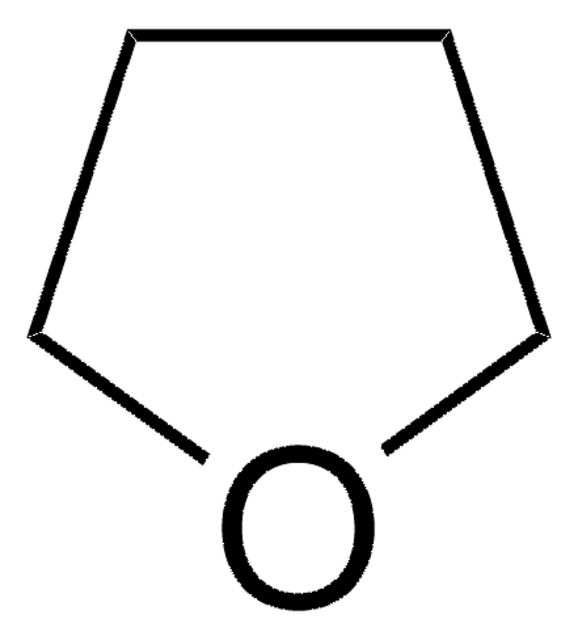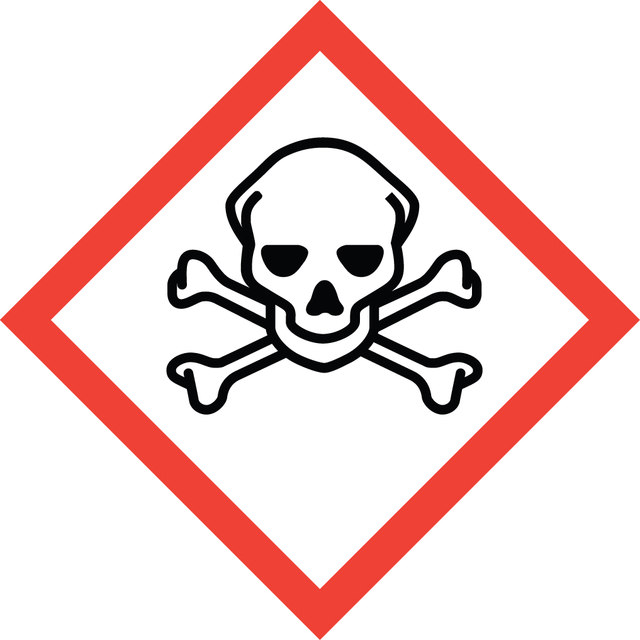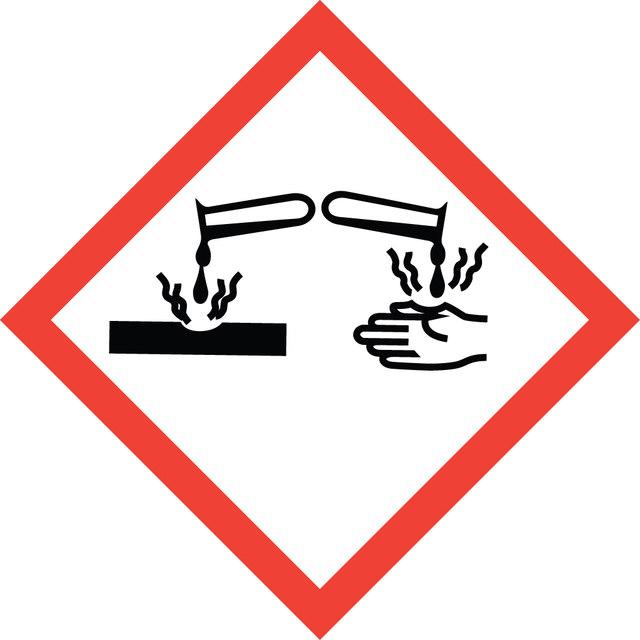30702
Nitric acid
puriss. p.a., ACS reagent, reag. ISO, ≥69%
About This Item
Recommended Products
grade
ACS reagent
puriss. p.a.
Agency
reag. ISO
vapor pressure
8 mmHg ( 20 °C)
Assay
≥69%
ign. residue
≤0.0005% (as SO4)
bp
120.5 °C (lit.)
density
1.413 g/mL at 20 °C (lit.)
anion traces
chloride (Cl-): ≤0.5 mg/kg
phosphate (PO43-): ≤0.5 mg/kg
sulfate (SO42-): ≤0.5 mg/kg
cation traces
Ag: ≤0.01 mg/kg
Al: ≤0.05 mg/kg
As: ≤0.01 mg/kg
Ba: ≤0.01 mg/kg
Be: ≤0.01 mg/kg
Bi: ≤0.1 mg/kg
Ca: ≤0.1 mg/kg
Cd: ≤0.01 mg/kg
Co: ≤0.01 mg/kg
Cr: ≤0.02 mg/kg
Cu: ≤0.01 mg/kg
Fe: ≤0.1 mg/kg
Ge: ≤0.05 mg/kg
K: ≤0.1 mg/kg
Li: ≤0.01 mg/kg
Mg: ≤0.1 mg/kg
Mn: ≤0.01 mg/kg
Mo: ≤0.02 mg/kg
Na: ≤0.5 mg/kg
Ni: ≤0.02 mg/kg
Pb: ≤0.01 mg/kg
Sr: ≤0.01 mg/kg
Ti: ≤0.1 mg/kg
Tl: ≤0.05 mg/kg
V: ≤0.01 mg/kg
Zn: ≤0.05 mg/kg
Zr: ≤0.1 mg/kg
SMILES string
O[N+]([O-])=O
InChI
1S/HNO3/c2-1(3)4/h(H,2,3,4)
InChI key
GRYLNZFGIOXLOG-UHFFFAOYSA-N
Looking for similar products? Visit Product Comparison Guide
Signal Word
Danger
Hazard Statements
Precautionary Statements
Hazard Classifications
Acute Tox. 3 Inhalation - Eye Dam. 1 - Met. Corr. 1 - Skin Corr. 1A
Supplementary Hazards
Storage Class Code
5.1B - Oxidizing hazardous materials
WGK
WGK 1
Flash Point(F)
Not applicable
Flash Point(C)
Not applicable
Regulatory Information
Choose from one of the most recent versions:
Certificates of Analysis (COA)
It looks like we've run into a problem, but you can still download Certificates of Analysis from our Documents section.
If you need assistance, please contact Customer Support.
Already Own This Product?
Find documentation for the products that you have recently purchased in the Document Library.
Our team of scientists has experience in all areas of research including Life Science, Material Science, Chemical Synthesis, Chromatography, Analytical and many others.
Contact Technical Service